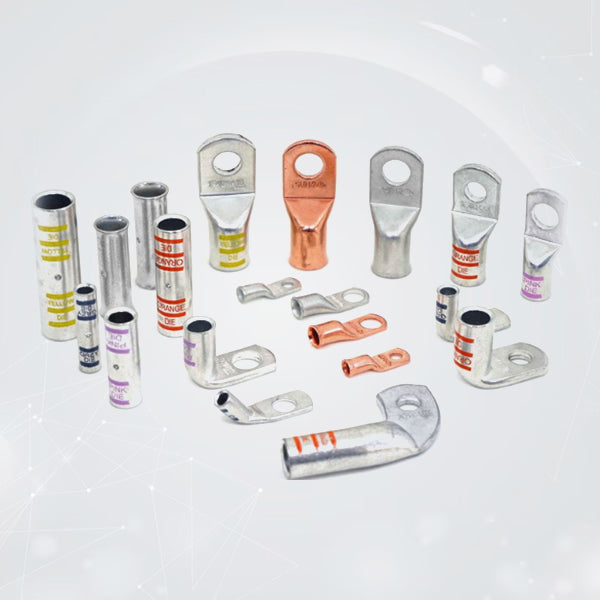
Powering Up with 250 MCM Lugs: A Guide for Professionals
In the realm of high-current electrical applications, where efficiency and reliability are not merely desirable but absolutely essential, 250 MCM lug emerge as indispensable components. Designed to handle substantial electrical loads, these lugs are commonly employed in a variety of demanding settings, including industrial machinery, large battery banks, and expansive off-grid power systems. This guide is tailored for professionals working in these fields, providing a comprehensive overview of 250 MCM lugs, covering their specific applications, key benefits, and best practices for installation to ensure optimal performance and safety.
Understanding 250 MCM Lugs
To fully appreciate the significance of 250 MCM lugs, it's crucial to understand the terminology involved. "MCM" stands for "thousand circular mils," an older unit of measurement for wire cross-sectional area. 250 MCM is a large wire size, indicating its capacity to carry very high currents. 250 MCM lugs are specifically designed to terminate these large-gauge cables, providing a secure and efficient connection point. These lugs are typically constructed from high-conductivity copper or aluminum, materials chosen for their ability to minimize resistance and ensure the smooth flow of electricity. The robust design of 250 MCM lugs is essential for withstanding the mechanical stresses and thermal demands of high-current applications.
Applications of 250 MCM Lugs
The high current-carrying capacity of 250 mcm cable lugs makes them suitable for a wide range of demanding applications. Some of the most common include:
- Industrial Machinery: Large motors, generators, and other heavy-duty equipment often require 250 MCM lugs to handle the substantial currents involved in their operation.
- Power Distribution: In power plants and substations, these lugs are used to connect large cables to busbars, transformers, and other components of the power grid.
- Battery Banks: Large battery banks, such as those used in backup power systems or off-grid installations, rely on 250 MCM lugs to ensure efficient and reliable connections between the batteries and the inverter or other equipment.
- Welding Equipment: High-amperage welding machines utilize 250 MCM lugs to handle the intense currents required for welding.
Benefits of Using 250 MCM Lugs
- High Current Capacity: The primary benefit of 250 MCM lugs is their ability to handle very high currents. This ensures that the electrical system can operate efficiently and safely without overheating or experiencing voltage drops.
- Low Resistance: Constructed from highly conductive materials, 250 mcm wire lugs minimize resistance, reducing energy loss and heat generation. This is crucial in high-current applications where even small inefficiencies can result in significant energy waste and potential safety hazards.
- Durability: 250 MCM lugs are designed to withstand the harsh conditions often encountered in industrial and heavy-duty applications. They are typically built to resist vibration, corrosion, and temperature extremes, ensuring a long and reliable service life.
- Reliability: In high-current systems, a reliable connection is paramount. A failure in a connection can lead to equipment damage, downtime, and even safety hazards. 250 MCM crimp lugs, when properly installed, provide a robust and dependable connection that minimizes the risk of failures.
Installation Best Practices
Proper installation is crucial to ensure the safe and efficient operation of 250 MCM lugs. The following best practices should be adhered to:
- Cable Preparation: The first step is to prepare the cable correctly. This involves stripping the insulation to the appropriate length, ensuring that the cable strands are clean and undamaged. For 250 MCM cables, this process requires precision and care to avoid damaging the conductors.
- Lug Selection: Choosing the right lug is essential. The lug must be sized correctly for the cable and the terminal to which it will be connected. It's also important to select a lug made from a compatible material to prevent galvanic corrosion.
- Crimping: Crimping is the most common method for attaching a 250 kcmil lug to cables. This involves using a hydraulic crimper to compress the lug tightly around the cable, creating a gas-tight seal. Proper crimping technique is essential to ensure a secure and reliable connection.
- Inspection: After crimping, the connection must be thoroughly inspected to ensure that it is properly made. This includes checking for proper compression, no loose strands, and no signs of damage to the lug or the cable.
- Torque: When connecting the lug to a terminal, it's crucial to tighten the hardware to the manufacturer's recommended torque specifications. Over-tightening can damage the connection, while under-tightening can lead to a loose connection and increased resistance.
- Safety: Working with high-current systems can be dangerous. It's essential to follow all safety precautions, including wearing appropriate personal protective equipment (PPE) and de-energizing the circuit before working on any connections.
Technical Details Recap
- Cable Size: 250 MCM
- Materials: Copper or Aluminum
- Crimping Tool: Hydraulic Crimper
Conclusion
250 MCM lugs are vital components in high-current electrical systems, providing the necessary capacity, conductivity, and durability for reliable operation. By adhering to the best practices outlined in this guide, professionals can ensure that these connections are made safely and effectively, minimizing the risk of failures and maximizing the performance of their electrical systems.

